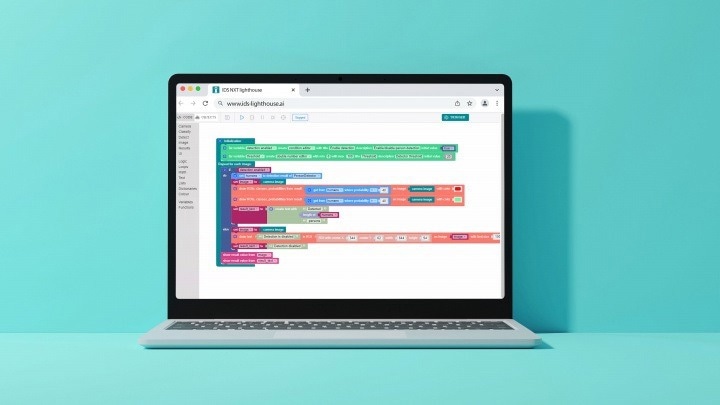AI-based image processing is anticipated to enhance the competitiveness of several companies from various sectors. Those who have tested and implemented the initial applications are excited by the rapid time to results that AI-based image processing provides.
However, AI vision is not yet being evaluated across the board or implemented into new projects as it is not (yet) as intuitive or user-friendly as often described by manufacturers.
Even if individuals are no longer required to be image processing experts to execute AI-based picture analysis, providing sufficient training data can be time-consuming and costly.
Additionally, it still requires a certain level of knowledge regarding how to draw confident conclusions from them and how these are then to be assessed. AI vision will only be widely accepted if the user-friendliness of AI is increased and its results, which tend to be rather challenging to evaluate, are more explainable. This will then lead to growing confidence in the use of AI.
With the help of IDS NXT, IDS Imaging Development Systems has come up with such an AI vision ecosystem of software and hardware components, which besides machine learning, also instinctively maps the full application workflow. Hence, solutions can be enforced in a time- and cost-saving method.
AI Vision in the Cloud
With the help of AI Vision Studio IDS NXT lighthouse, users can take their first steps with AI, testing its suitability for specific applications and making vision apps for IDS NXT cameras to resolve complex tasks. No training is required, and there is no need to set up a development environment.
This makes it simple to get started when it comes to the implementation and commissioning of an AI vision system. For this reason, the full programming has been hidden behind simple-to-understand interfaces and tools that cover all steps of an AI vision development.
With the help of Microsoft (Azure) and Amazon (AWS), professional cloud computing services have been offered that can be adapted to the needs of the customer. This implies that the training performance could be increased, or new training models can be supported if they are required.
More Assistance, Quick Labeling
At the beginning of a project, an application wizard with some kind of interview mode helps identify specific tasks, select the required AI methods and prepare a suitable vision app project.
Additionally, the block-based editor makes it possible to build separate process sequences from ready-made function blocks by "drag and drop" without having to handle platform-specific programming or the unique syntax of a programming language.
This sets the stage for bigger resilience in the application description and concurrently makes the processes simple to comprehend.

Figure 1. With the block-based editor, individual applications with AI processing can be mapped in vision apps without having to know the syntax of a specific text-based programming language. Image Credit: IDS Imaging Development Systems GmbH
Data Manager Included
The AI Vision Studio will also offer additional support when preparing training data in the future. An automatic labeling system enables imported image data and particular content with ROIs to be organized more rapidly into data sets with appropriate labels. This helps to extend data sets with the image content to constantly enhance networks via re-training.
Less Data, More Confidence
Providing adequate information in balanced amounts for all targeted classes is often time-consuming. Since error cases can occur in all possible forms, there is often an imbalance of GOOD and BAD parts. Thus, it is important to provide solutions that require less training data in preparation.
Therefore, besides classification and object detection, users in the future will benefit from anomaly detection, which identifies all known as well as unknown error cases that exceed the normal deviations of a GOOD part.
This needs comparatively little training data when compared to other AI techniques. Simply put, anything that would be noticed by a human being who spends a lot of time learning what objects are classed as “typical” can also be determined by an AI system with anomaly detection.
Anomaly detection is therefore another useful method in quality control as it can decrease manual visual inspections while also identifying and avoiding errors early on in the production process.

Figure 2. Anomaly detection identifies both known and unknown (untrained) deviations that deviate from the trained “typical” object appearance. Image Credit: IDS Imaging Development Systems GmbH
Explainable AI
For improved understanding, amongst other things, a heat map visualization of the AI attention in the AI Vision Studio is offered. For this purpose, special network models are used at the time of training, generating a kind of heat map at the time of the assessment of test data sets.
It stresses those image areas that receive the most attention from the neural network and hence impact the outcomes and performance.
Also, incorrect or under-representative training images could sensitize the AI to undesirable features. An accidentally trained product label could also distort the outcomes.
The reason for such “wrong” training is known as data bias, and attention maps can be used to help minimize the issues that can crop up regarding AI-based decisions and increase acceptance of AI in the industrial surrounding.

Figure 3. “Attention Maps” visualize the focus of a neural network on specific image content, also including a data bias triggered by a product label in the training images. Image Credit: IDS Imaging Development Systems GmbH
Summary
IDS is continuously developing its AI system with a unique focus on simple handling and time efficiency. This will allow AI to be utilized more rapidly across the board, such as in SMEs. With regular, free updates, the AI system is continuously improved and adapted to the needs of the users.
As far as the hardware side is concerned, the IDS NXT camera family is also being improved by a stronger model that has the potential to carry out neural networks much faster, allowing AI vision even in applications with high clock rates.

This information has been sourced, reviewed and adapted from materials provided by IDS Imaging Development Systems GmbH.
For more information on this source, please visit IDS Imaging Development Systems GmbH.